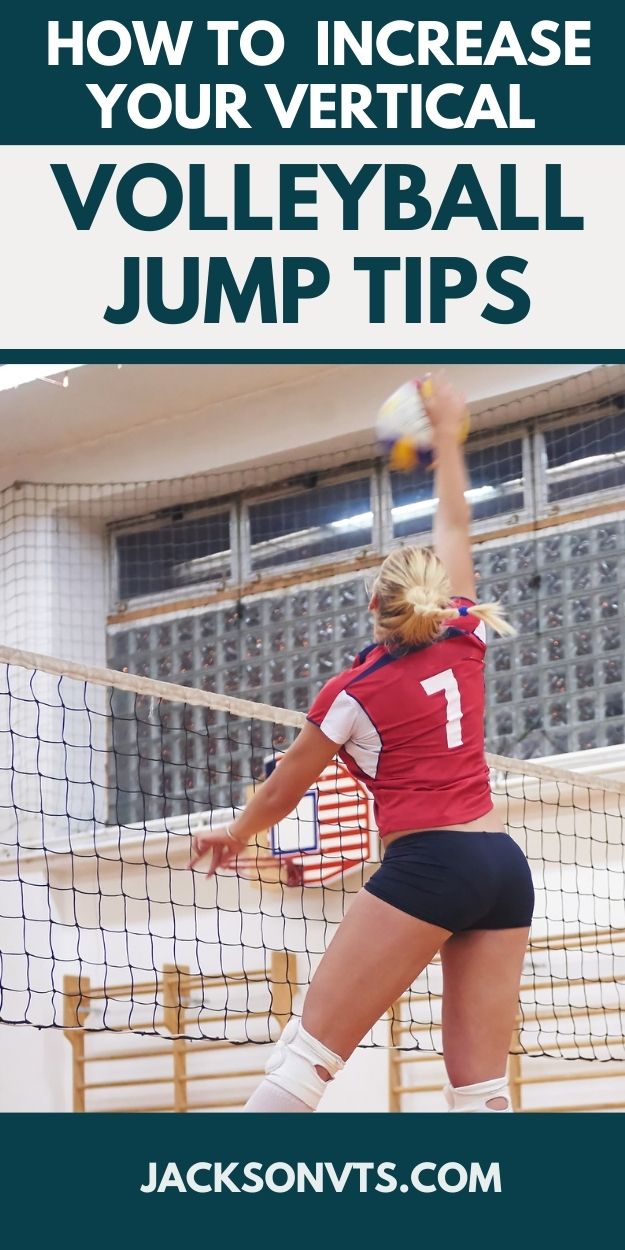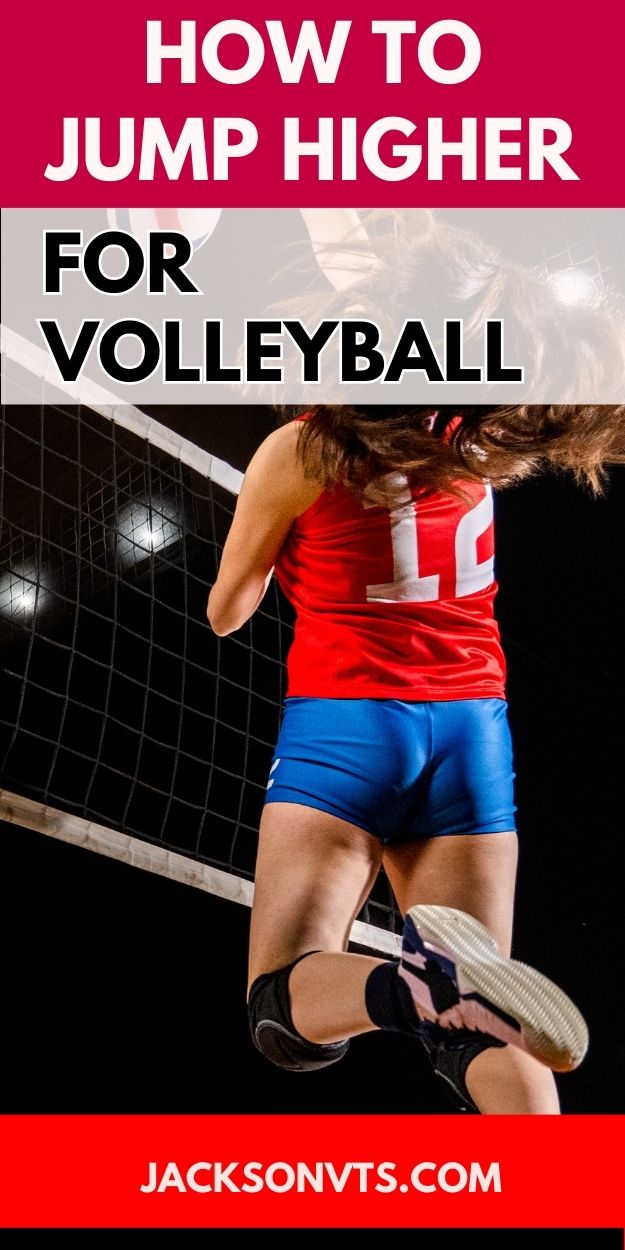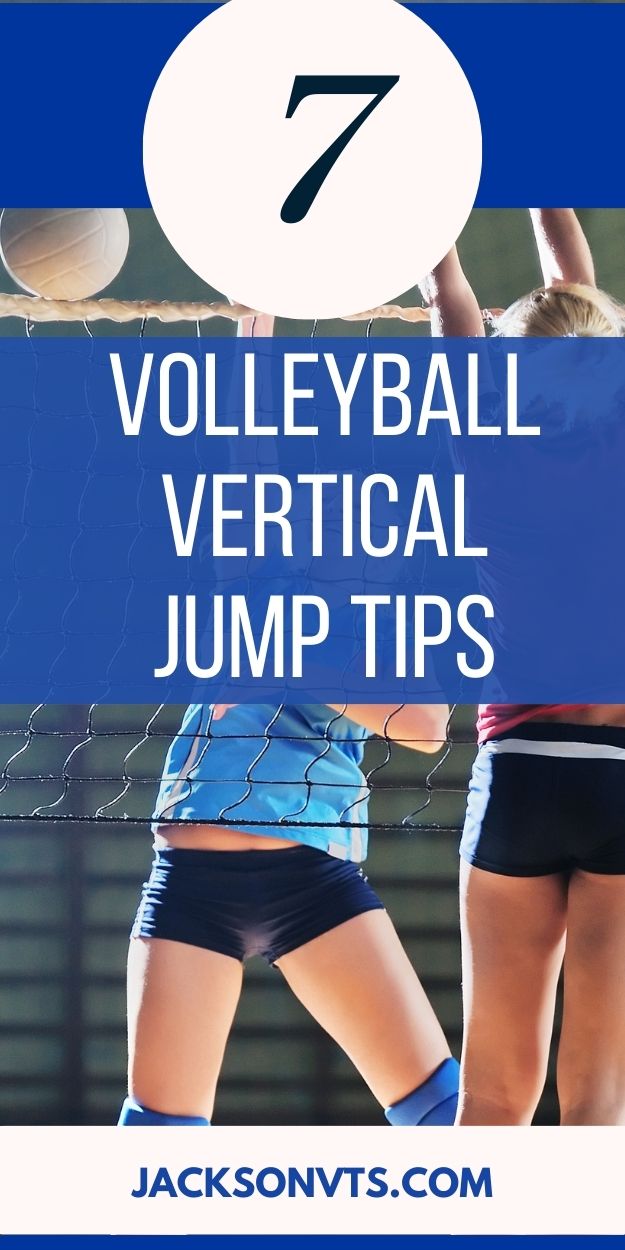Volleyball Jump Training
7 Tips to Jump Higher
Here are 7 volleyball jump training tips that will help you increase your vertical for spiking and blocking. Did you know there are some simple things you can do today to increase your vertical jump?
Use the following tips to increase your vertical today!
1. Consistent Steps. Did you know you can increase your vertical jump simply by synchronizing your movements? This means by simply practicing your approach jump, your central nervous system (CNS) becomes more efficient at recruiting and synchronizing your muscles.
As you play more volleyball and take more approaches, your CNS becomes better at activating a larger number of motor units simultaneously and coordinating them to produce a powerful contraction.
This is why you often see volleyball players increase their vertical simply by just playing more volleyball. They increase recruitment and synchronization of muscles which results in a greater force production during the volleyball approach.
2. Double Arm Pump. In coordination with the volleyball footwork, the double arm pump is the action of swinging the arms backward as you are planting to jump. Swinging the arms in this way helps you create an additional lift. Swinging the arms back helps generated momentum which is converted into a vertical lift.
This arm movement also helps you synchronize your timing for spiking the ball. There's also a double arm pump for moving laterally along the net for blocking. For example, during the swing block, the blocker will use the arms to help time the positioning. Timing is critical when it comes to blocking. The arms can help to slow down or speed up to help "time" the block.
If you found this information helpful, keep it close to you by saving it to your Pinterest.
3. A Quick Step to Plant. Stepping quickly before you jump will help you jump higher. Basically, when you create an explosive muscle contraction, you are storing up more energy for the jump. Quick steps help you store more energy. This is why you can jump higher if you rebound vs jumping from a static position. Imagine if you squat down and hold the position for 5 seconds, then from the squat position, you jump up.
Now compare that jump to squatting down then quickly changing directions and jump up as high as you can. Your height will be much lower when jumping from the static squat position because you lack momentum. You need the quick change of direction in order to use the stored elastic energy in your muscles. This is why it's always better to wait and then go fast when you approach to hit.
For example, if you take a slow approach to the ball, you won't jump as high. I recommend taking small steps in the beginning of the approach, then as you recognize where the ball is being set, you speed up and take super-quick explosive step to the spot you need to plant to jump. You'll also notice you will be better at getting in position to hit when you wait and go fast. The longer you wait, the better your judgment will be for getting to the correct spot to plant to jump. If you start the approach too soon, you won't make a good decision for getting in position.
4. Reach High to Have a Vertical Arm. When you contact the ball, it's best to have the arm be in a vertical position. This means the arm makes a straight line from shoulder to wrist. Often a hitter can increase the height of contact just by straightening the arm. This is the quickest way to increase the height you contact the ball. If you find that you are bending your elbow and your arm isn't straight when contacting the ball, there are some things you can try to break this habit. If you have a spike trainer device available, use this to help you reach higher during contact.
If there isn't a spiker trainer available, then you can simply have a teammate or coach hold the ball higher for you to hit the ball out of their hand. Contacting the ball at a higher point may feel weird in the beginning. You just need to get a feel of what it's like to contact the ball higher. Focus on reaching high and wrapping the hand over the top of the ball. Put targets on the court and aim for targets that are closer to the net than what you are used to. For example, place a target at the 3 meter line (10 foot line) and lower the net.
Work on contacting the ball in such a way that you can hit the target. Next, either raise the net or move the target closer to the net. Also, focus on your contact. You want to create topspin. Wrap your fingers over the top of the ball and always finish with fingers pointed downward. Doing this will force you to reach higher and contact the ball in such a way the ball is hit at a sharper angle downward into the court.
5. Jump Up, Not Forward. Jumping forward is more of a broad jump. Broad jumping is good for hitting a ball out of the back row or when jump serving. However, when spiking at the net, you want to avoid broad jumping. Broad jumping takes inches off your vertical jump. When you approach to spike, you don't want to make the mistake of jumping too much forward.
The double arm pump should help you jump more upward. Practice hitting a ball that's set tight to then net. If you land in the net after you hit, then you are broad jumping too much. To prevent broad jumping, you need to take off the ground closer to where you contact the ball. Basically, be more under where you will contact the ball. If the contact point is way out in front, then you will have to fly into the ball. Flying into the ball will take inches off your vertical.
Once you get good at hitting tight sets and you don't find yourself landing in the net, then you will now know you're good at jumping "up" in the air and not broad jumping forward.
If you found this information helpful, keep it close to you by saving it to your Pinterest.
Volleyball Jump Training Workouts
6. Plyometric Workouts. Plyometric exercises train your nervous system and help improve neuromuscular coordination and timing. "Plyometrics" is basically just a fancy term for jump training. The goal is to generate force in a short amount of time. This is why Plyometrics help you become faster and help you jump higher. Plyometrics are great for volleyball players because the athlete will benefit by improving coordination, neuromuscular control, speed, agility, and the vertical jump.
7. Strength Training to Increase Explosive Power. Strength training should definitely be part of your volleyball jump training. Barbell Front Squats, and Deadlifts are great strength training exercises for increasing strength for jumping. To further increase explosiveness you could combine strength training movements with plyometric movements. For example, immediately after performing a 5 rep set of front squats, perform 8 vertical jumps. This type of training is known as "complex training". By immediately performing the jumps after the squats, your muscles are more receptive to the explosive work. You're basically combining maximal strength work (heavy squats) with explosive power work (jumps).
Complexing exercises is an efficient way to train for strength and explosive power.
If you found this information helpful, keep it close to you by saving it to your Pinterest.






